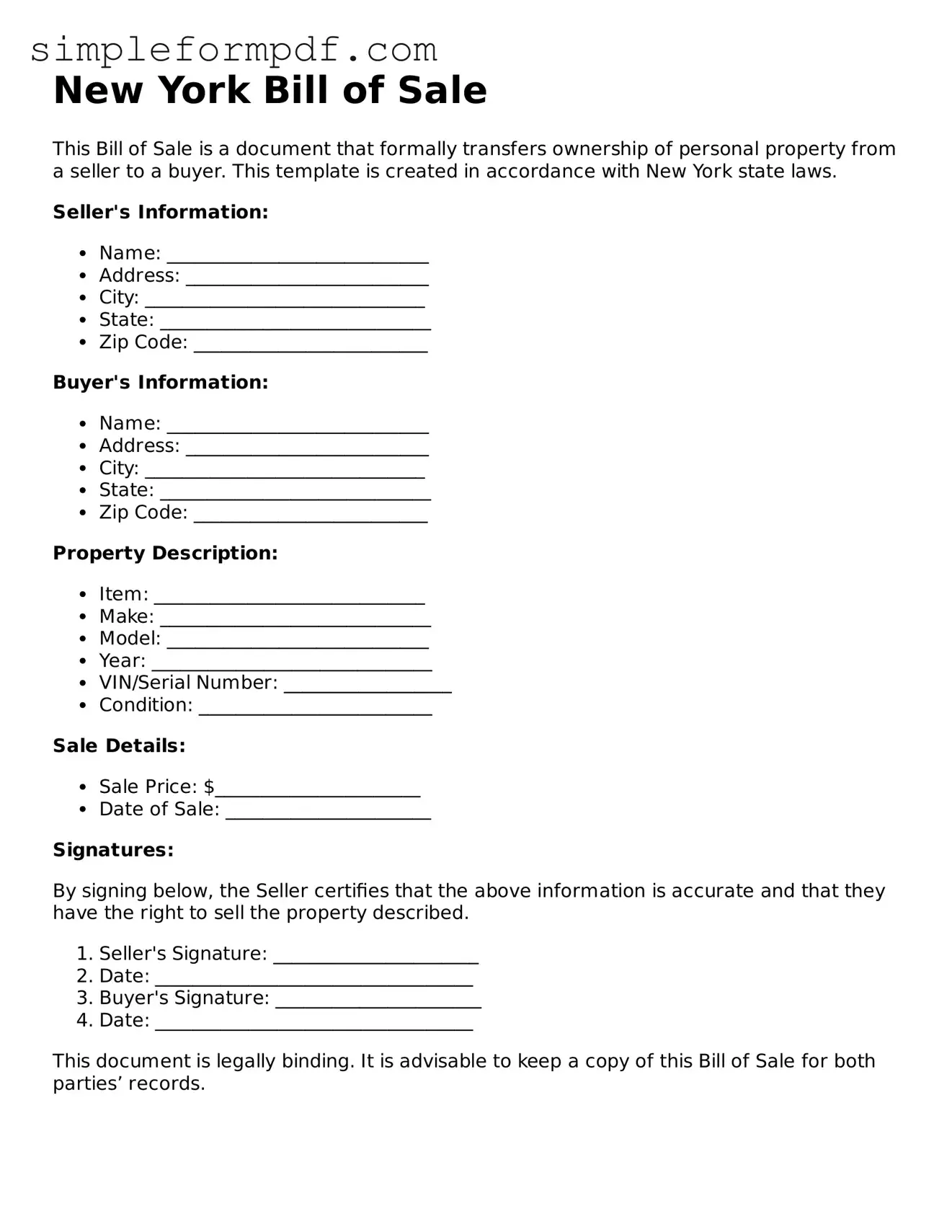New York Bill of Sale
This Bill of Sale is a document that formally transfers ownership of personal property from a seller to a buyer. This template is created in accordance with New York state laws.
Seller's Information:
- Name: ____________________________
- Address: __________________________
- City: ______________________________
- State: _____________________________
- Zip Code: _________________________
Buyer's Information:
- Name: ____________________________
- Address: __________________________
- City: ______________________________
- State: _____________________________
- Zip Code: _________________________
Property Description:
- Item: _____________________________
- Make: _____________________________
- Model: ____________________________
- Year: ______________________________
- VIN/Serial Number: __________________
- Condition: _________________________
Sale Details:
- Sale Price: $______________________
- Date of Sale: ______________________
Signatures:
By signing below, the Seller certifies that the above information is accurate and that they have the right to sell the property described.
- Seller's Signature: ______________________
- Date: __________________________________
- Buyer's Signature: ______________________
- Date: __________________________________
This document is legally binding. It is advisable to keep a copy of this Bill of Sale for both parties’ records.
